Discover the steps to transform your garage with a fresh coat of paint, enhancing its aesthetic appeal and durability.
Painting a garage can breathe new life into this often overlooked space, transforming it from a dull, utilitarian area into a vibrant and inviting part of your home. Whether you’re looking to improve its aesthetic appeal or protect the walls from wear and tear, this article will guide you through the process step-by-step.
From selecting the right paint and tools to preparing the surface and applying the paint, every detail is covered to ensure a smooth and successful garage makeover. Stick with this guide and soon, your garage will be more than just a place to park your car or store your tools – it will be a reflection of your personal style.
Key takeaways:
- Choose durable latex paint for interior garage walls.
- Use acrylic latex exterior house paint for garage doors.
- Prepare walls by removing obstructions, cleaning, and filling cracks.
- Apply two coats of paint using a roller and brush.
- Use epoxy paint for garage floors and properly prepare the surface.
Choosing the Right Type of Paint for Garage Walls and Doors
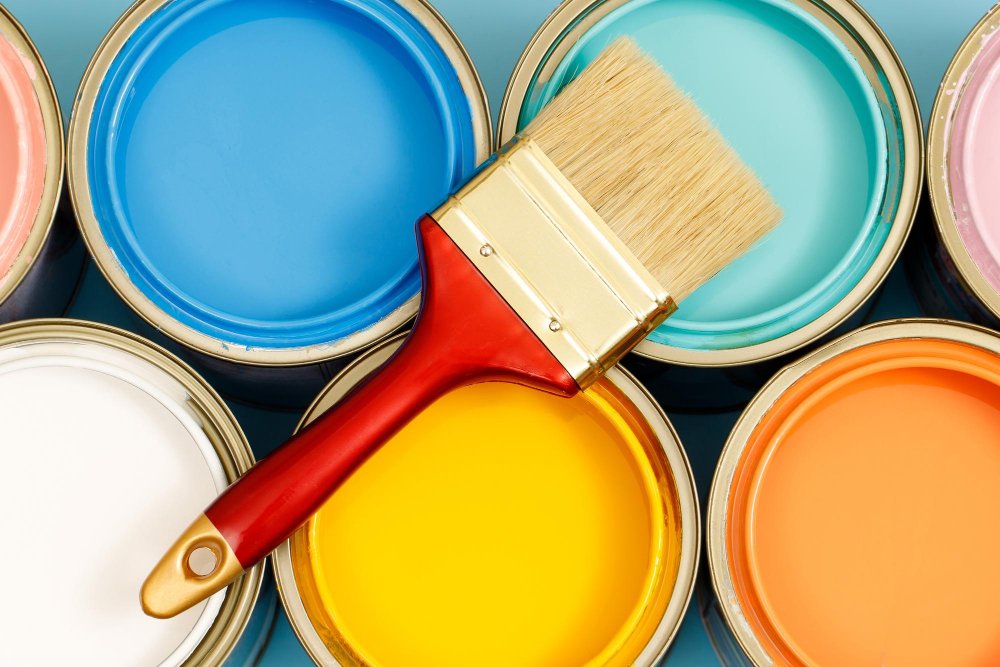
When it comes to garage walls and doors, selecting the right paint is crucial. A non-negotiable factor to consider is the durability of the paint as garages are exposed to varying temperatures, humidity, and even occasional knocks and bumps.
For interior garage walls, opt for a high-quality latex paint. This type offers a broad spectrum of color options and is known for its ability to resist mildew and stains making it a versatile choice. Plus, latex paint is relatively easy to apply and clean.
For garage doors, acrylic latex exterior house paint is an ideal choice. It’s weather-resistant, flexible, and less likely to fade or peel off due to exposure to sunlight or fluctuating temperatures.
Keep in mind that paints with a semi-gloss or gloss finish, whether for the walls or doors, are a practical option since they are easy to wipe clean.
Preparation Procedure Before Painting Garage Walls

Before approaching the task of painting, ensure the walls are in an optimal state to achieve the best results. Initially, you’ll want to remove any items hanging on the walls, from tool racks to artwork. A surface free of obstructions is not only easier to work on but also crucial for an even paint job. Deal with the existing dirt and dust on garage walls by giving them a good sweep and follow that with vacuuming.
For stained or greasy walls, a degreasing agent application should be the next step. Follow the manufacturer’s instructions for use and rinsing. Any flaking or peeling paint should be scraped off prior to painting. A hole filler can be used to rectify any cracks, holes, or rough patches on the walls. Sanding the treated areas will ensure an even surface for paint application.
Lastly, use painter’s tape to protect any area or edges you don’t want the paint to reach, for example, outlets, doors, and window frames. This phase is essential because the more thoroughly and carefully you prepare, the smoother the painting process will be, resulting in a polished, professional look.
Detailed Steps for Painting Garage Walls
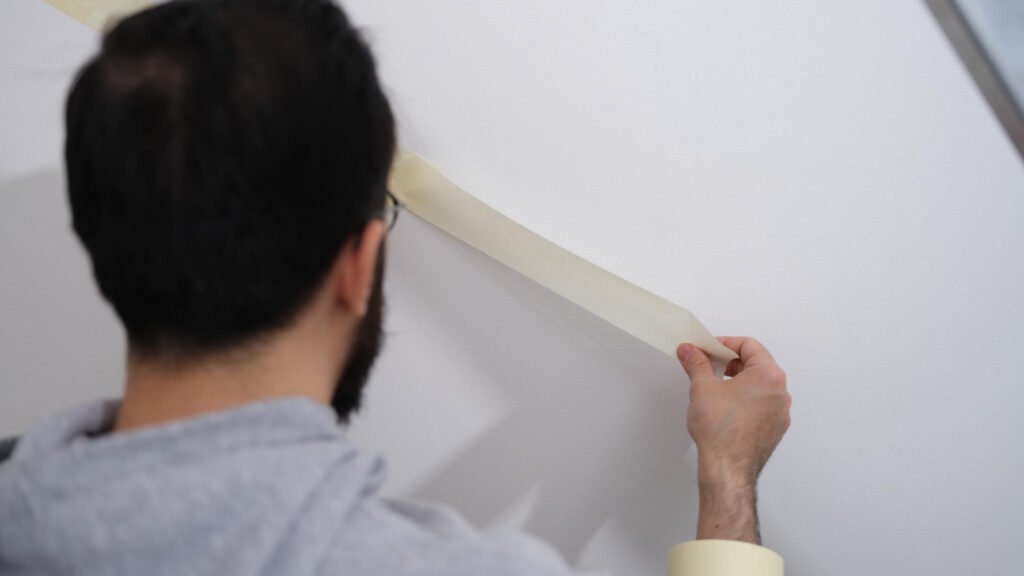
Begin the process by taping off areas around windows, doors, and the ceiling with good quality painters tape to prevent accidental smears. Cover the garage floor with a drop cloth for extra protection. Ensure your garage has good ventilation, given the chemical nature of most paints.
Work on small wall sections at a time, starting at the top and gradually moving downwards. This approach helps prevent lap marks and ensures a smoother, more professional finish.
Opt for two coats of paint to achieve a more vibrant and lasting result. After applying the first coat, wait for it to completely dry before applying the second. This could take anywhere from a couple of hours to overnight, depending on the paint type and weather conditions.
Use a paint roller for larger wall surfaces and a brush to fill in corners or hard-to-reach areas. By adopting this strategy, you’ll get a seamless paint job that thoroughly covers your garage walls.
Don’t rush the process; patience is key. Allow appropriate drying time between coats and don’t overload your brush or roller, as this can cause drips or uneven application.
Choosing the Appropriate Paint for Garage Doors
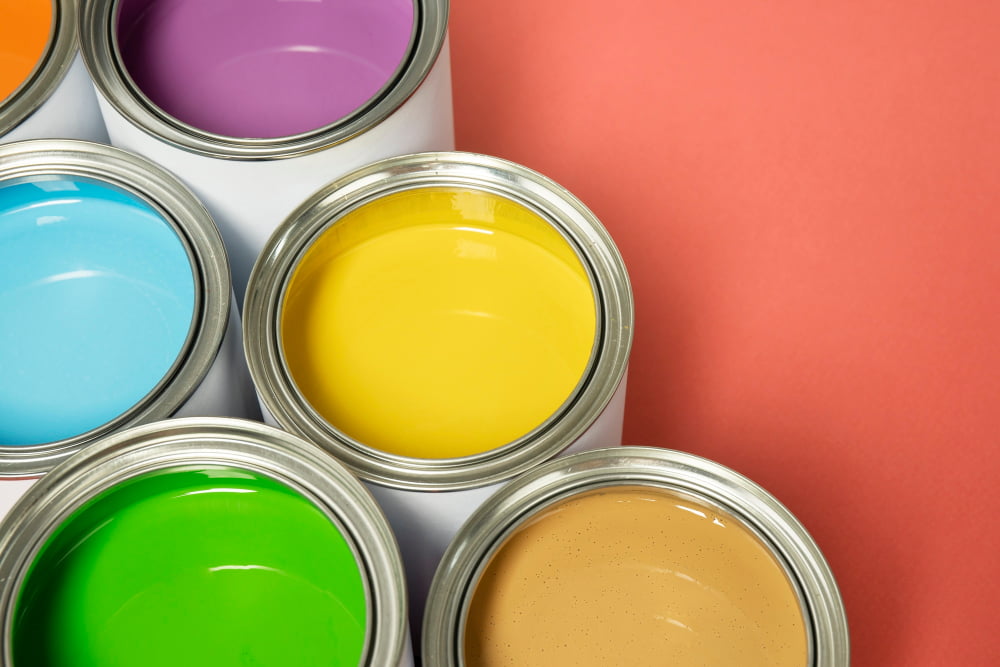
Selecting the ideal paint can significantly influence both the aesthetic appeal and durability of your garage door. Always prioritize exterior-grade latex paint since it provides excellent durability and ease of maintenance. This type of paint also withstands the garage’s high-traffic environment and adverse weather conditions. A semi-gloss finish is an excellent choice due to its easy-to-clean properties.
When choosing a color, opt for one that complements your home’s exterior. Lighter shades can help to reflect heat, while darker ones can absorb it. If the door is metal, specially formulated paints are available for this material. Bear in mind a primer is vital for a long-lasting paint job, particularly for raw wood or bare metal doors.
In terms of quantity, usually, one gallon of paint will cover 350 to 400 square feet with one coat. For most double garage doors, a single gallon will suffice for a single coat. However, two coats are typically recommended for optimal coverage and longevity. Always check the paint can for the manufacturer’s specific coverage information.
Step-by-Step Guide On Painting Garage Doors
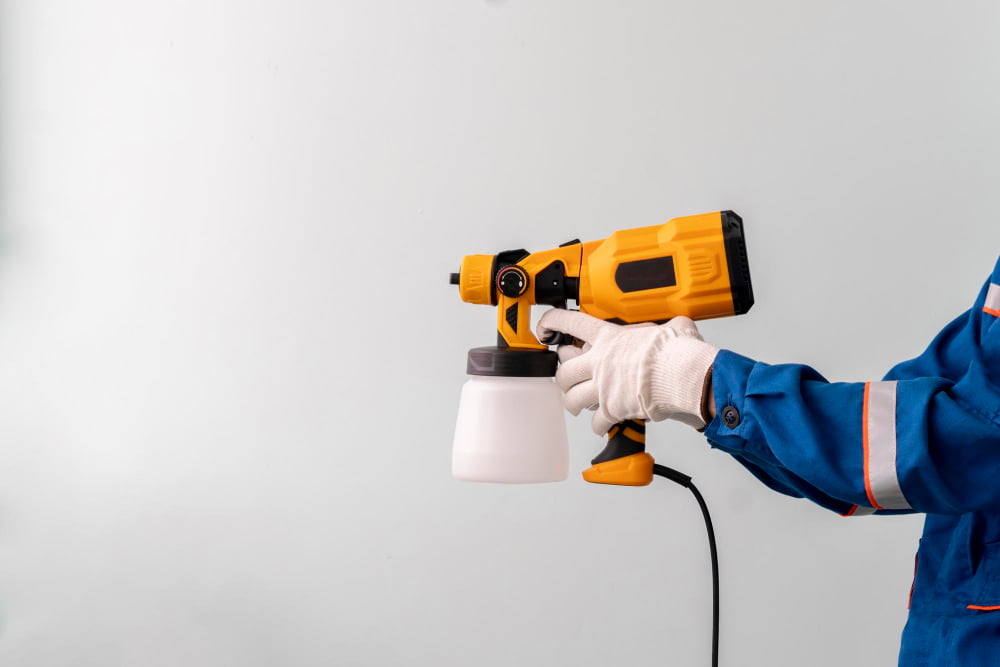
Start by removing the door handle and other hardware for a sleek, clean finish. A few pieces of painter’s tape over the areas you’d prefer paint-free can aid in precision.
You’ll want to commence by washing the door to remove dust and grime that could mar your smooth paint job. A mixture of warm water and mild dish soap would suffice. Once washed, rinse the door thoroughly and allow it to dry completely.
Utilizing a high-quality primer can create a perfect canvas for your paint. Allow it to dry as per the manufacturer’s recommendations, typically overnight.
Now comes the choice of either a brush, roller or paint sprayer. Brushes are perfect for tricky spots and detail work but can be time-consuming. Rollers cover large areas quickly but won’t provide the same smooth finish as a sprayer.
Apply the first coat of paint swiftly but don’t rush, the key is sustaining a steady rhythm that provides even coverage. Once dry, assess if a second coat is necessary.
Remember, always use long, consistent strokes, whether you’re using a brush, roller or sprayer, to avoid any drips or uneven application. And keep in mind: painting a garage door is not a race. For the best results, take your time to ensure all sections are attended to carefully.
Selecting the Ideal Paint and Preparing Garage Floors for Painting

Knowing which type of paint works best for garage floors is a crucial part of the process. Epoxy paint, a tough, durable, and long-lasting option, is highly recommended due to its resistance to common garage issues such as oil spills, scuffs, or grime.
Before getting started with painting, a proper preparation of the garage floor is vital. Here are a few steps to ensure a smooth process:
- Clean the Floor: Use a high-quality degreaser to get rid of oil stains. For general cleaning, a power washer can be an effective tool.
- Repair Cracks: Use a concrete patch product to fill in any cracks or holes the floor may have.
- Etch the Surface: Apply a concrete etch solution with a stiff bristle brush, followed by a thorough rinse and allow the floor to dry completely. This will enhance the adhesion of the paint.
- Prime the Floor: Depending on the paint manufacturer’s instructions, a primer may be necessary for better paint adhesion and durability.
Remember, the preparation phase is equally as important as the painting itself, and spending adequate time on it can significantly improve the lifespan and look of your painted garage floor.
Post-Painting Maintenance and Cleaning Tips for Garage Walls, Doors, and Floors
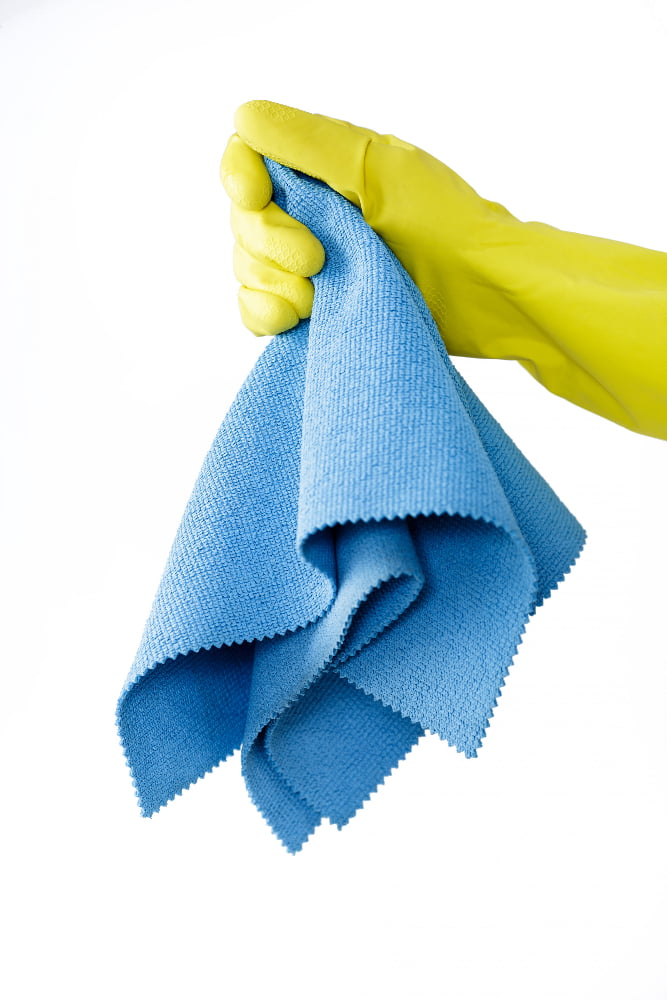
Once the paint has completely dried, it’s essential to maintain its fresh look. For garage walls and doors, a simple wipe-down with a damp cloth can remove dust and minor spots. Always use gentle cleaning solutions to avoid damaging the paintwork. In case of tough stains, avoid scrubbing harshly, which could cause the paint to wear off.
Garage floors demand a refreshing routine. Start with sweeping or vacuuming to eliminate dust and debris. For stubborn stains, a concrete cleaner or degreaser can work wonders. Remember, always use a soft brush to prevent chaffing the paint. A sealer can be applied annually to retain the floor’s glossy finish.
Keep sharp objects at a distance to prevent scratches. It’s recommended to retouch the paint every few years to uphold the aesthetic charm and durability of your garage. With these tips in mind, your painted garage can remain in pristine condition for years to come.
FAQ
What kind of paint do you use on a garage?
The most suitable paint for a garage is either the Sherwin Williams Pro Classic Acrylic Satin/Semi-gloss or the Sherwin Williams Promar 200 Zero VOC Eggshell (latex).
How do I prepare my garage walls for painting?
To prepare your garage walls for painting, first clean them thoroughly, then apply a coat of quality drywall primer with polyvinyl acetate (PVA), crucial for a smooth and even finish.
Do you have to prime garage before painting?
Yes, it is essential to prime garage walls before painting, particularly if there are water or stubborn stains, for a quality application of paint.
How much paint do I need to paint a 2 car garage?
To paint a typical 2-car garage, including walls and ceilings, approximately 7 gallons of paint will be required.
What are the best techniques for applying paint in a garage environment?
For optimal results in a garage environment, apply paint using a roller for large areas and a brush for corners and edges, ensure proper ventilation, use a primer for better adhesion, and consider two coats for long-lasting results.
How can I make my painted garage floor more slip-resistant?
To make your painted garage floor more slip-resistant, add a layer of clear coat mixed with anti-slip granules.
Is it necessary to use a specific type of paint for the garage door?
Yes, it is necessary to use weather-resistant, exterior-grade paint specifically designed for metal or wood, depending on the material of the garage door.